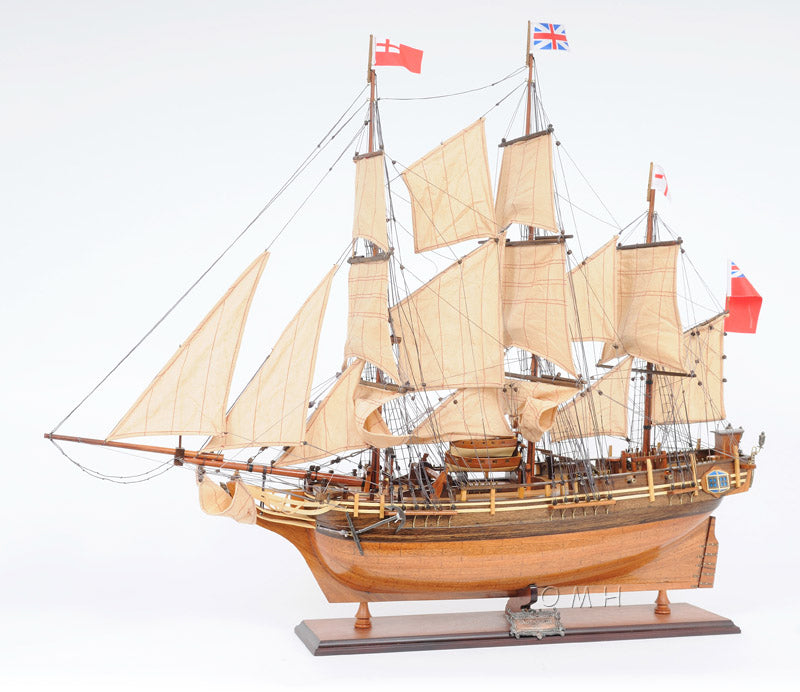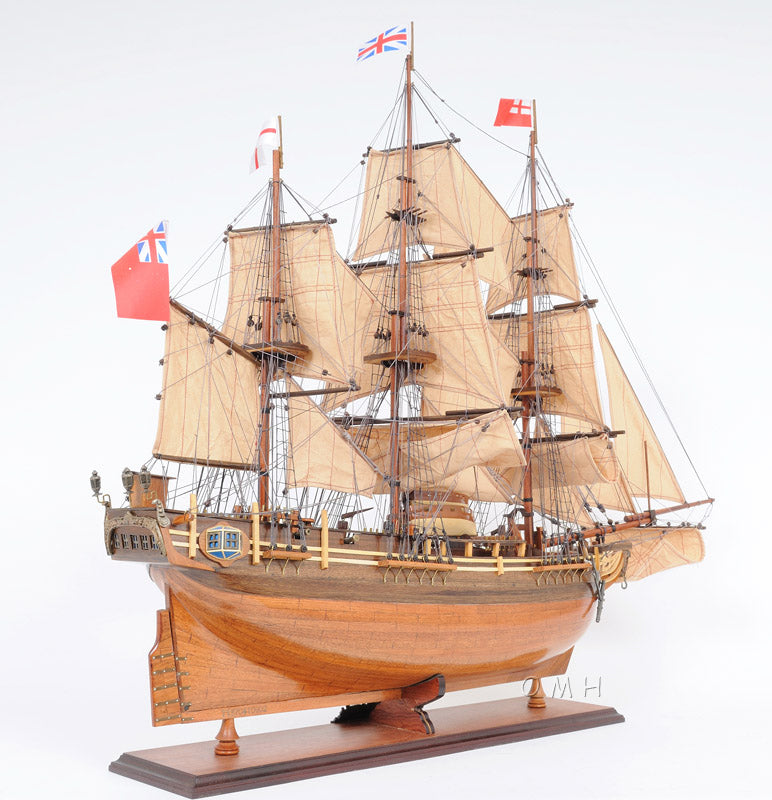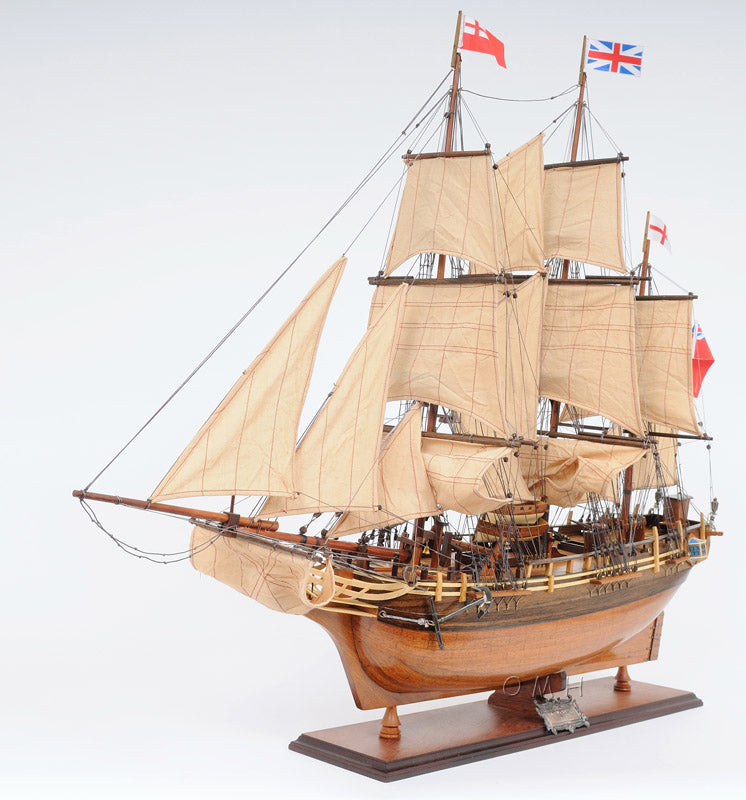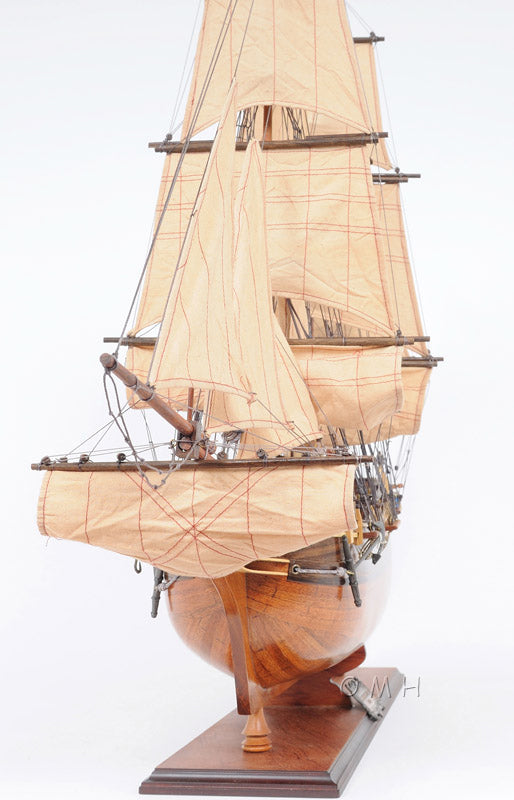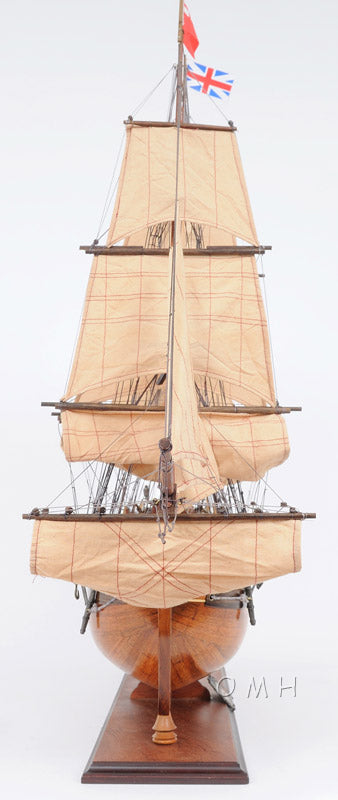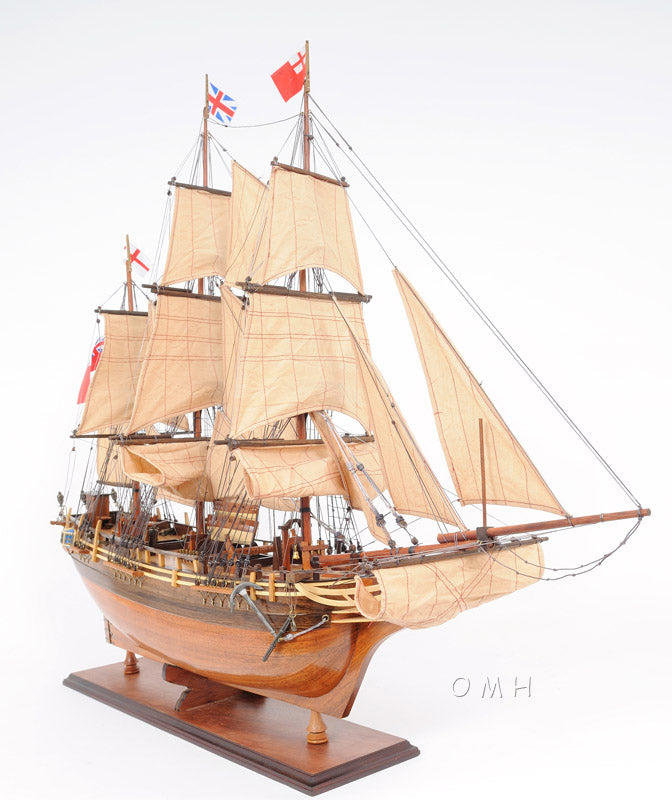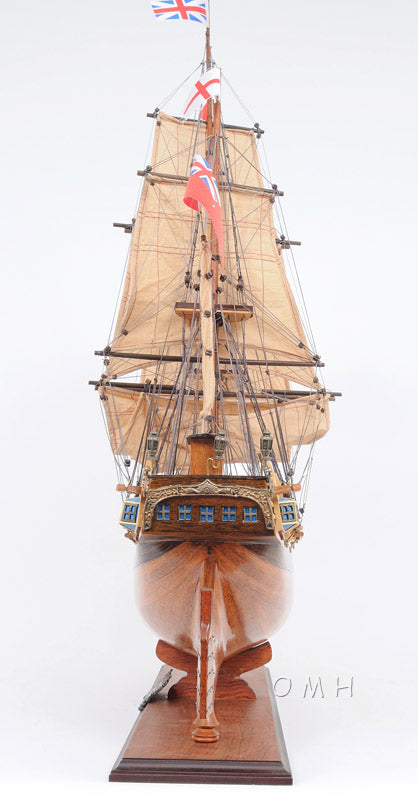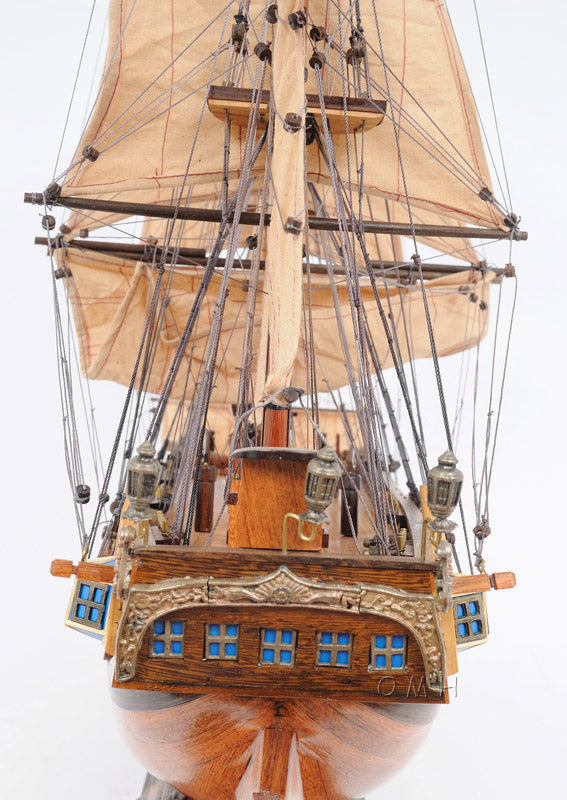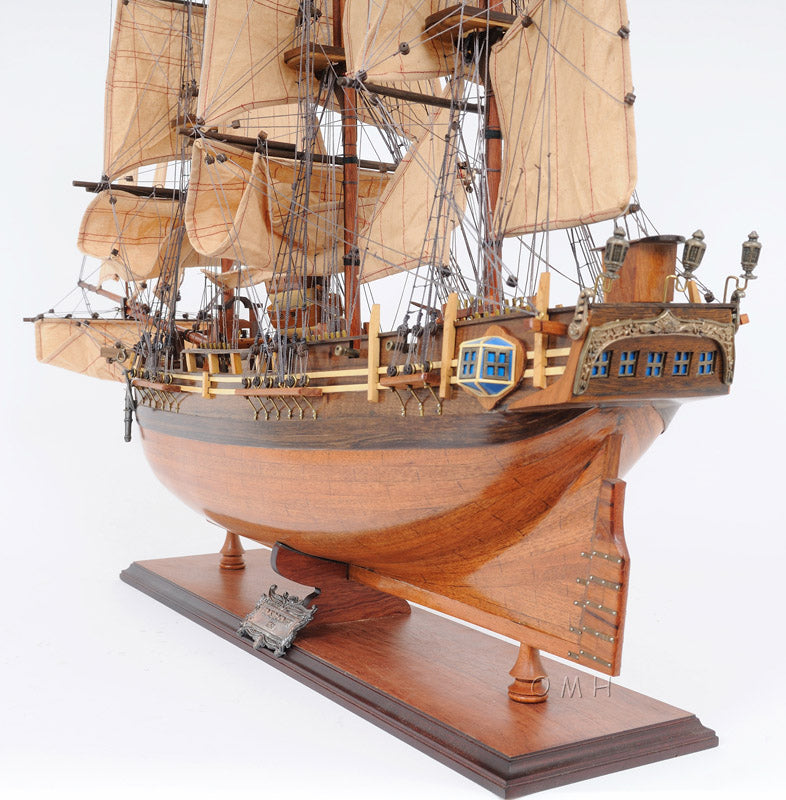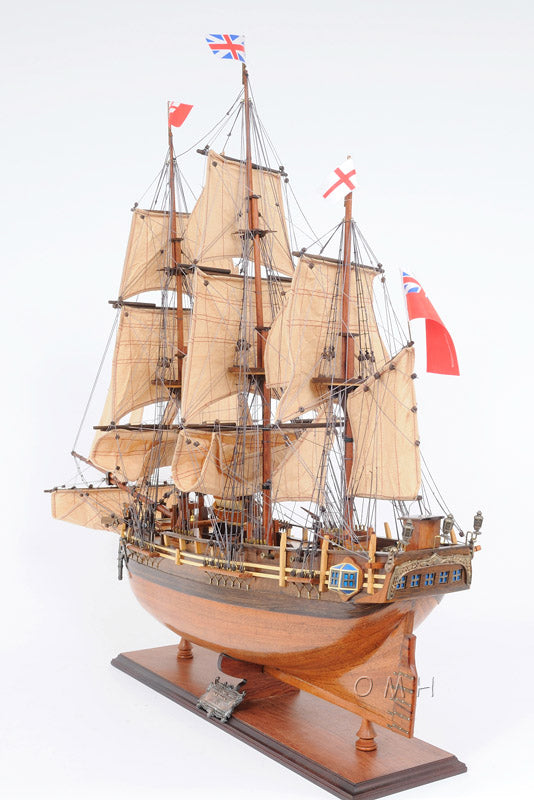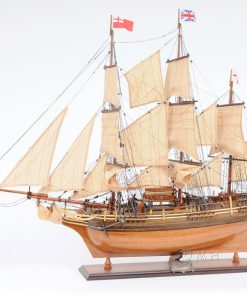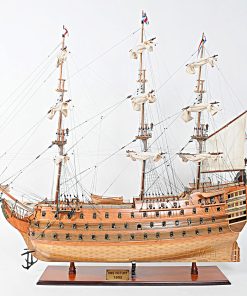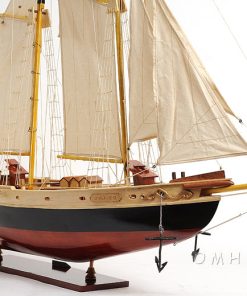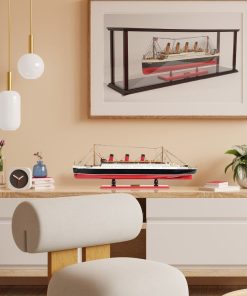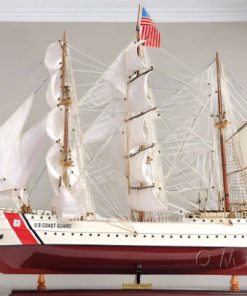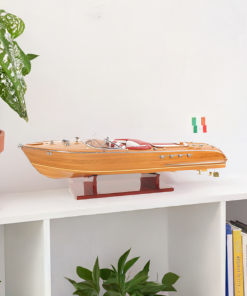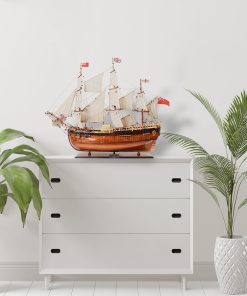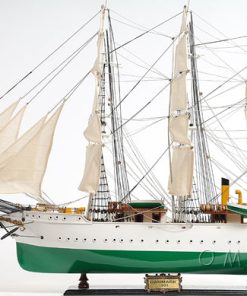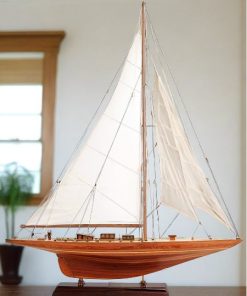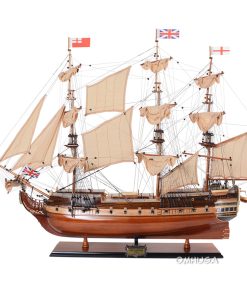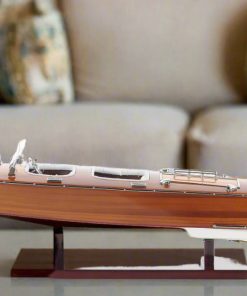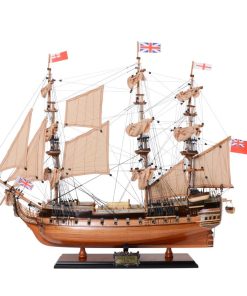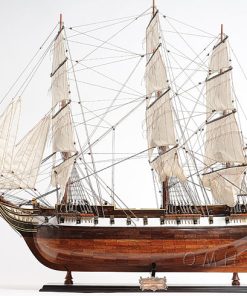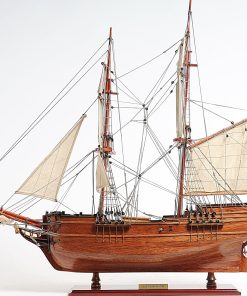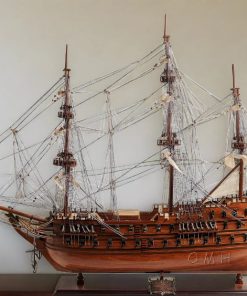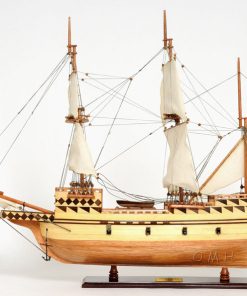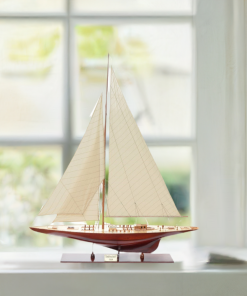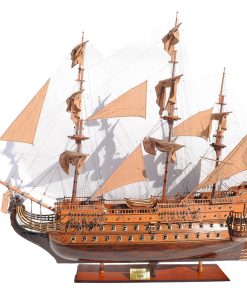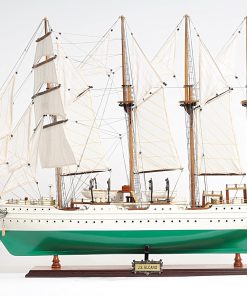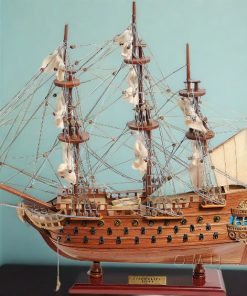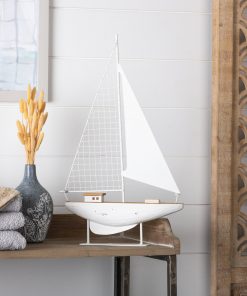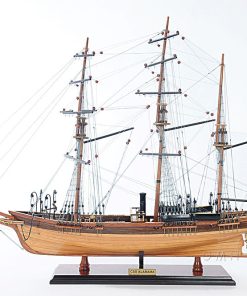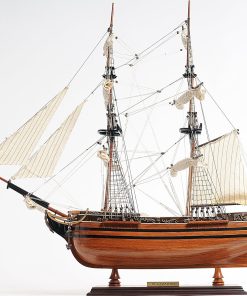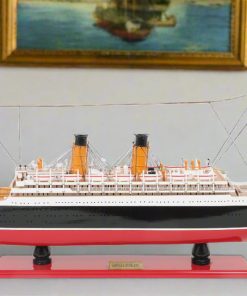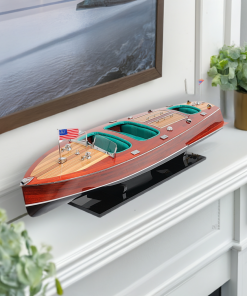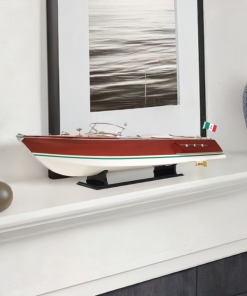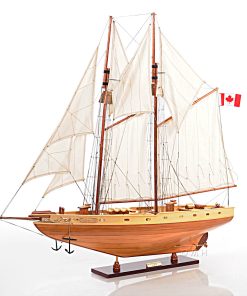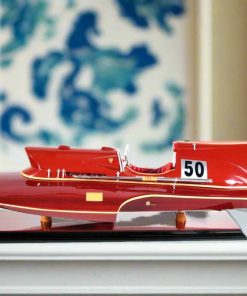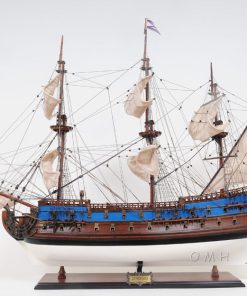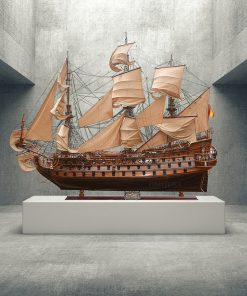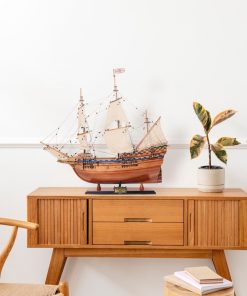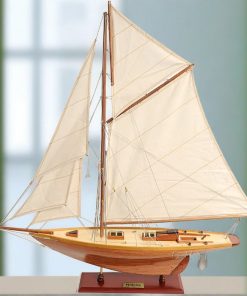Indulge in the elegance and exclusivity of this museum-quality masterpiece, a replica of the immortalized H.M.S. Bounty featured in the classic film “Mutiny on the Bounty.” With a unique serial number etched into its hull, this Exclusive Edition offers insight into its production date, high-quality materials, and other exquisite specifications.
Indulge in luxury with our meticulously handcrafted model, intricately designed from historical photographs, drawings, and plans. Created with only the finest materials including red cedar, rosewood, and mahogany, this stunning piece is constructed with the same plank-on-frame technique as real vessels.
This H.M.S. Bounty model ship presents two-toned wood on the hull, plank-on-frame construction and three decks. A remarkable bowsprit featuring brass statues and wooden panels complements the securely-rigged three large masts with hand-knotted lines and hand-stitched linen sails. Anchors and a rudder adorn the bow and stern, while the deck boasts metal cannons, handmade lifeboats, a wooden crane, windlass, bell tower, and more. The stern deck includes an admiral’s quarter with metal lanterns, statues and brass ornaments.
Dimensions: 37″ length x 10″ width x 30″ tall
A little history:
HMS Bounty, also known as HM Armed Vessel Bounty, was a small merchant vessel purchased by the Royal Navy for a botanical mission. HMS Bounty was originally named Bethia, built in Hull at the end of 1784.The Navy Board bought her on May 23, 1787, on the suggestion of Sir Joseph Banks, renamed her Bounty. June 8, 1787 was her first commission. She was 90 feet 10 inches long with a beam of 24 feet 4 inches and a draft of 11 feet 4 inches. She was sent to the Pacific Ocean to acquire breadfruit plants and transport them to British possessions in the West Indies under the command of William Bligh. That mission was never completed, due to a mutiny led by the acting Master, Fletcher Christian who sailed the ship to what is now called Bounty Bay and settled there. To prevent the ships detection, and anyones possible escape, the ship was burned on 23 January 1790.
Professional packing and fast shipping
Due to our longstanding partnership with UPS FedEx DHL and other major global carriers, we can offer a variety shipping options. Our warehouse staff is extremely skilled and will package your products according to our precise and exact specifications. Your products will go through an extensive inspection and will be securely secured prior to being delivered. Everyday we deliver thousands of packages to clients from all over the world. Our dedication to becoming the largest online retailer around the globe is evident by this. The distribution centers and warehouses distribution are located in Europe and the USA.
Note: Orders that contain more than one item are assigned a processing period according to the item.
Prior to shipping We will examine thoroughly the items you have ordered. Today, the majority of orders will be delivered within 48 hours. The delivery time will be between 3 and 7 working days.
Returns
We don't control the inventory in our warehouse and factory. The levels of stock can change at any time. You may not receive your order once it has been placed.
Our policy is valid for 30 days. If you have passed 30 days without a trace since the purchase however, we're unable to give you a return or exchange.
Your item should be in the original packaging and in good condition. It must also not be used. It must also be returned in the original packaging.
Related products
model ship
model ship
model ship
model ship
model ship
model ship
model ship
model ship
model ship
model ship
model ship
model ship
model ship
model ship
model ship
model ship
model ship
model ship
model ship
model ship
model ship
model ship
model ship
model ship
model ship
model ship
model ship
